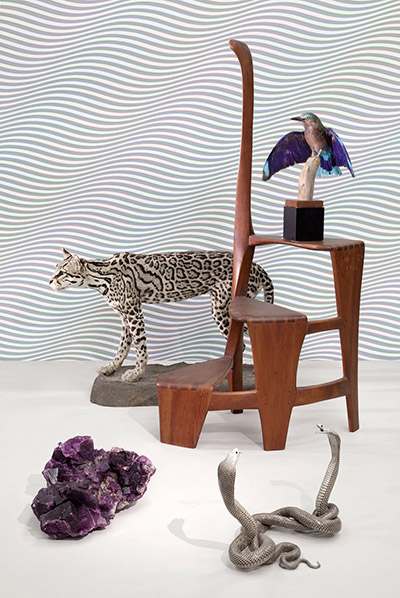
Bridget Riley, Ch'i-Yün, 1974; Leopardus pardalis (Ocelot), mid-twentieth century; Wharton Esherick, Spiral Three-Step Ladder, 1966; Coracias garrulus (European Roller), early twentieth century; Fluorite crystal; Confronted Najas (Cobras), early twentieth century. (Photo: PD Rearick)
The Cranbrook Hall of Wonders draws its inspiration from the precursor to the modern museum: the “Cabinet of Curiosities” or “Wunderkammer,” a sixteenth-century collecting and display technique in which art, ornate functional objects, natural oddities, and anthropological discoveries co-existed together as a microcosm of knowledge. This contemporary interpretation is a floor-to-ceiling installation featuring Cranbrook Art Museum’s preeminent collection of artworks, design, and craft objects from the twentieth and twenty-first centuries, exhibited alongside cultural properties from Cranbrook’s historic campus, and inspired selections from the vast holdings of Cranbrook Institute of Science. From the sculpture of Claes Oldenburg to antique navigational tools to Arts and Crafts pottery, the Hall of Wonders combines seemingly disparate objects to explore new avenues of display and context, shaping compelling vignettes that—in the spirit of its Renaissance-era predecessors—seek to captivate, provoke, and amaze.

Copyright © 2025 Cranbrook Art Museum. All rights reserved. Created by Media Genesis.